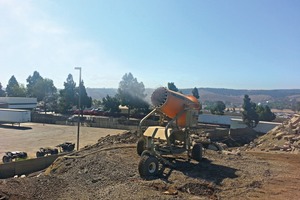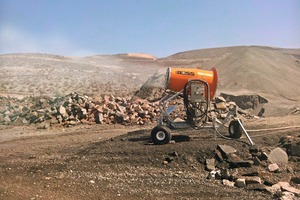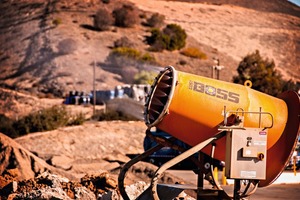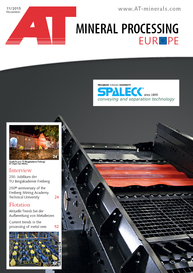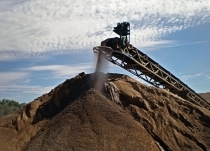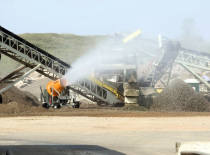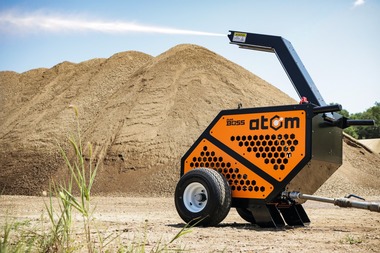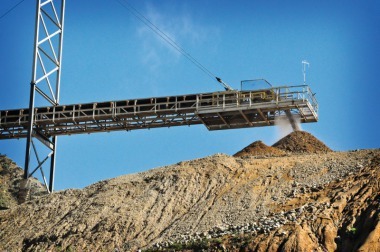Dust control in the recycling of construction waste
Reclaimed Aggregates Inc. (RAI) occupies 5 acres in Southern California, operating one of the largest pavement salvage and reclaimed asphalt pavement (RAP) production facilities in the region. By upgrading the dust suppression from a sprinkler system to a DustBoss® DB-45 (Fig. 1), the company report a substantial air quality improvement in the material receiving area.
RAI was formed as a subsidiary of Pavement Recycling Systems (PRS) in 2005, with its first two locations in Colton and Lancaster. In 2009, the company’s Chula Vista facility was added and acts as its largest processing location, receiving and processing concrete and asphalt recovered from multiple road and construction demolition projects.
Dusty business
Dozens of dump trucks per day deliver recovered pavement from projects all over the San Diego area to the Chula Vista site. Material is offloaded onto a 200‘x200‘ dry earth receiving area and immediately moved by front loader to the crusher or into storage piles. “The offloading process creates a tremendous amount of dust”, said Facilities Manager Robert Erautt. “At first, we tried to reduce the amount of dust with a sprinkler system. It just saturated the material, creating a lot of mud, but the dust still remained an issue.”
The Company reviewed different options and chose the DB-45 based on the DustBoss series of suppression equipment from Dust Control Technology. The unit is able to throw its atomized plume 45.72 m to deliver effective dust control over a 1115 m² area (Fig. 2). When equipped with optional 359 ° oscillation, the design can cover as much as 16 875 m² from a single location. The mist is created by a stainless steel manifold with 18 brass atomizing nozzles delivering 5.52 bar of pressure, propelling millions of droplets with a 510 m³/min, 11.19 kW industrial fan. The DB-45 delivers a dense curtain of water droplets atomized to a 50-200 µm size range, which creates the greatest attraction to most dust particles. While large sprinklers can apply 1893 l/min or more, the DB-45 puts out just 42.8 l/min at 6.89 bar inlet pressure, helping RAI prevent mud and minimize runoff (Fig. 3).
“The DB-45 made an immediate impact”, Erautt continued. “On hot dry days – which we get a lot of around here – a little breeze can carry dust a long way. We just turn on the atomizer and you can see the mist pull the dust out of the air. The unit is on a metal carriage, so we can adjust its position if the wind changes, but generally it stays in one place. We leave the machine running most of the day if it isn’t raining”, Erautt added.
Sustainable Road Production
Prior to material recycling, California roads were constructed with aggregate and sand pulled from local quarries. To replace these roads, thousands of tons of existing asphalt, concrete and base were removed and transported to landfills, while virgin material was trucked in. Reclaimed Aggregates has made it possible to minimize the use of new materials by recycling road and construction debris into its Class II base CMB (crushed miscellaneous base), meeting CalTrans specifications. RAI primarily produces a Recycled Class II base, as well as various products and materials for use in pavement preservation using 100 % recycled asphalt.
In addition to cold milling, pavement preservation and soil stabilization, PRS also provides cold in-place recycling (CIR or CIPR). The process involves a “train” of several different machines, which together handle the milling of existing asphalt pavement. It is then removed from the roadbed and added to a crusher with its own integrated dust suppression, which reduces the material to a 1-inch minus aggregate. The aggregate is transferred to a machine that mixes the cold milled material with asphalt-based emulsified recycling agents in an engineered mix design. The cold recycled asphalt is installed, compacted to specific depths and then overlaid with a thin section of virgin asphalt. Sometimes a RAP slurry can be installed over the recycled asphalt as a preservation tool, depending on the project specs.
“A road project can involve thousands of truck loads carrying asphalt out and bringing material in, causing a lot of dust and traffic,” Erautt pointed out. “The CIR process only requires the engineered emulsion to be shipped in, reducing truck traffic 40:1 and lowering the carbon footprint of most projects by about 70 % to 80 %. In addition, the work is done faster, the cost of the process plummets and the finished product is just as good.” Erautt called it an engineered approach using sustainable solutions.
$(LEhttp://

